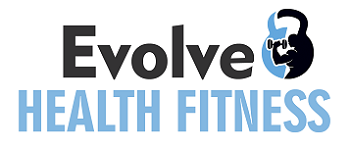Are You Using Whey Protein Right? Here Are 5 Mistakes to Watch Out For
Whey protein is one of the most widely used supplements in the fitness world and for good reasons only. It’s fast-digesting, convenient, and highly effective when it comes to hitting your daily protein goals.
But despite its popularity, many people still don’t use whey protein the right way. Small mistakes in how you consume it can limit your results or even lead to unwanted side effects.
Let’s look at the top 5 most common whey protein mistakes—and how to avoid them so you can make the most of every scoop.
1. Using Whey Protein as a Meal Replacement
One of the biggest mistakes people make is treating whey protein like a complete meal. They’ll have a shake and skip lunch or dinner, thinking it’s a healthy swap.
Why it’s a problem:
Whey protein is a supplement, not a substitute. It adds protein to your diet but lacks the fiber, healthy fats, complex carbs, and essential vitamins and minerals you get from whole foods.
What to do instead:
Use whey protein as a snack, post-workout fuel, or to boost your protein intake when needed. If you’re short on time, combine your protein shake with whole food ingredients like oats, fruits, or a spoonful of nut butter to make it more balanced.
2. Not Timing It Right
Some people take whey protein whenever it’s convenient—morning, afternoon, or night—without any consideration of their activity level or goals.
Why it matters:
Whey protein is quickly digested, which makes it perfect for post-workout recovery. This is the time when your muscles need amino acids to repair and grow.
What to do instead:
Try to take your whey protein within 30–60 minutes after your workout. This timing helps maximize muscle recovery and supports better performance in future workouts.
3. Ignoring the Ingredients Label
Not all whey proteins are created equal. Some products are packed with added sugars, artificial flavors, preservatives, and unnecessary fillers that can do more harm than good.
Why it’s important:
These hidden ingredients may cause digestive discomfort, especially if you’re sensitive to lactose or sweeteners. Plus, they reduce the overall quality of the protein supplement.
What to do instead:
Always read the label. Look for whey protein that offers at least 20–25g of protein per scoop, is low in sugar, and contains minimal additives. If you have a sensitive stomach or are lactose intolerant, go for whey protein isolate or a lactose-free variant to avoid bloating and discomfort.
4. Over-Focusing on Protein and Neglecting the Rest of the Diet
Whey protein is important—but it’s not the only nutrient your body needs. Many people fixate on hitting their protein goals and forget about carbs, fats, fiber, and micronutrients.
Why this is a mistake:
Your body thrives on balanced nutrition. Protein helps with muscle repair, but carbs provide energy, fats support hormones, and fruits and vegetables supply essential vitamins for overall health and performance.
What to do instead:
Use whey protein as part of a diverse and nutritious diet. Pair your shakes with whole foods like bananas, oats, peanut butter, eggs, or leafy greens. Use whey protein powder as a part of the diet, not as a single source.
- Taking Too Much Whey Protein
“More protein equals more muscle,” right? Not quite. Some people take two or three scoops in a single serving, thinking it will speed up their progress.
Why this is risky:
Your body can only absorb so much protein at once. The excess is either stored as fat or excreted. Over time, consistently high protein intake (especially from supplements) can stress your kidneys, especially if you’re not drinking enough water.
What to do instead:
Stick to one scoop at a time (usually 20–30g of protein). Spread your total protein intake across your meals and snacks throughout the day for better absorption and efficiency. And always remember to stay hydrated—it helps your body process protein more effectively.
Final Thoughts
Whey protein is a powerful ally in your fitness journey—but only when used the right way.
Here’s a quick recap:
- Don’t treat it as a meal replacement—combine it with real food.
- Time it wisely, especially after workouts.
- Check the label for quality and clean ingredients.
- Balance your diet with carbs, fats, and micronutrients.
- Avoid going overboard—moderation is key.
With a little awareness and smart usage, whey protein can help you hit your fitness goals faster. whether that’s building muscle, losing fat, or just feeling stronger and more energetic.
Stay consistent, hydrate well, and enjoy the gains.
All the best on your fitness journey!




